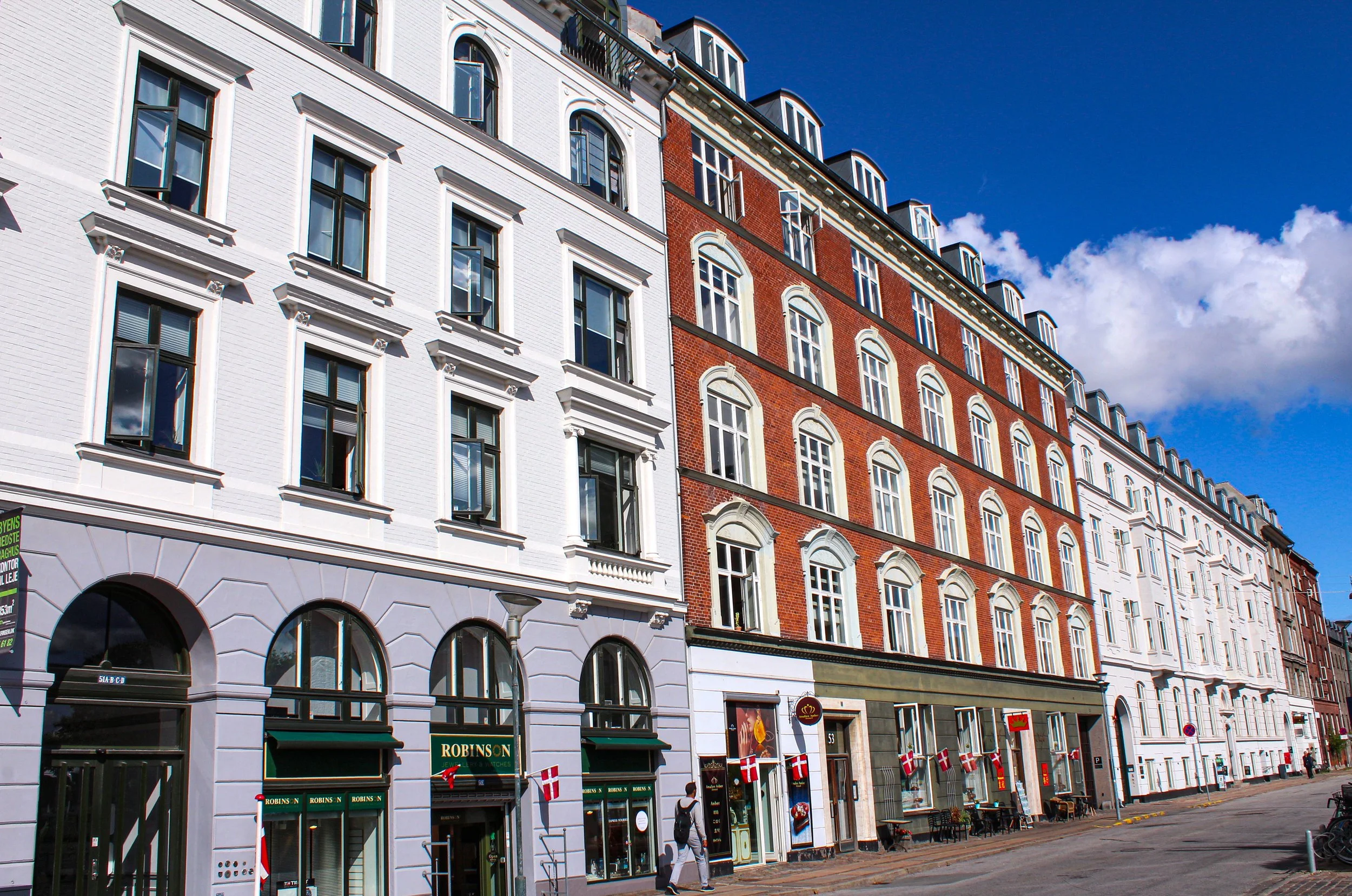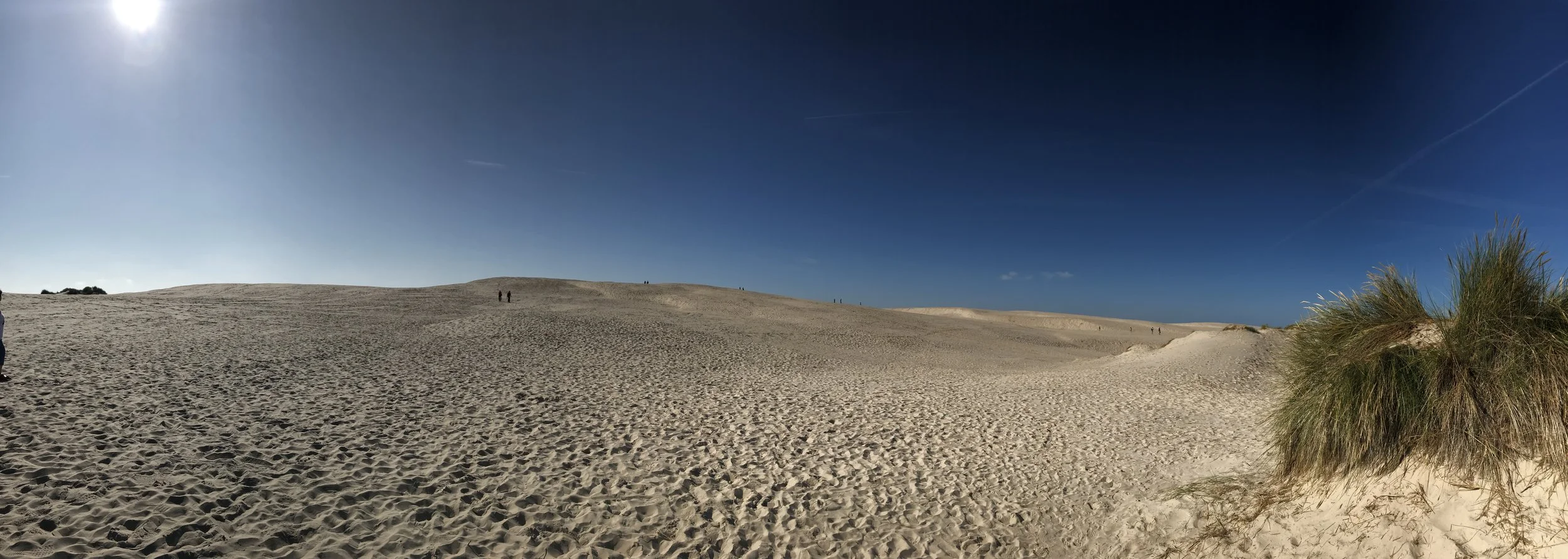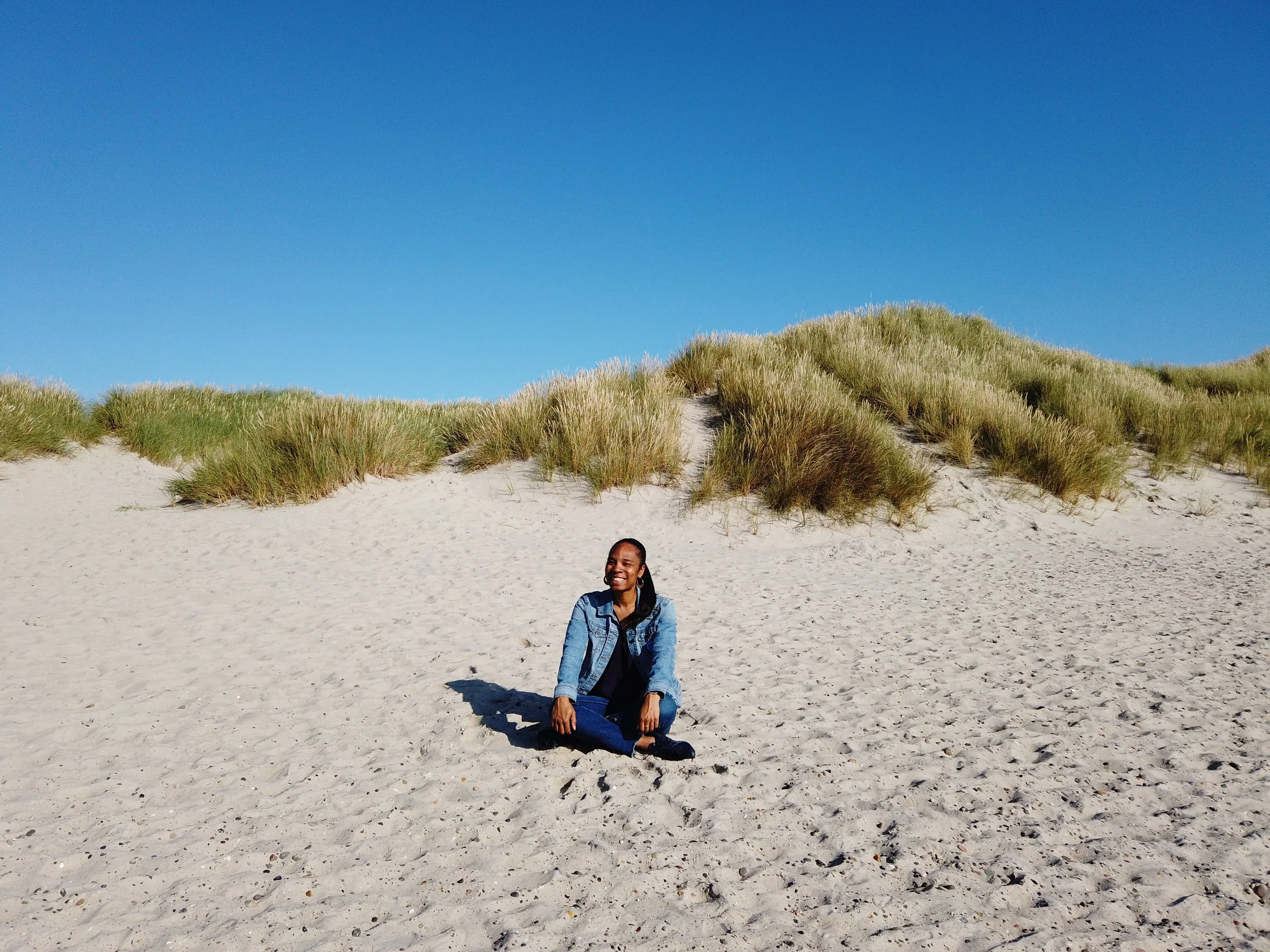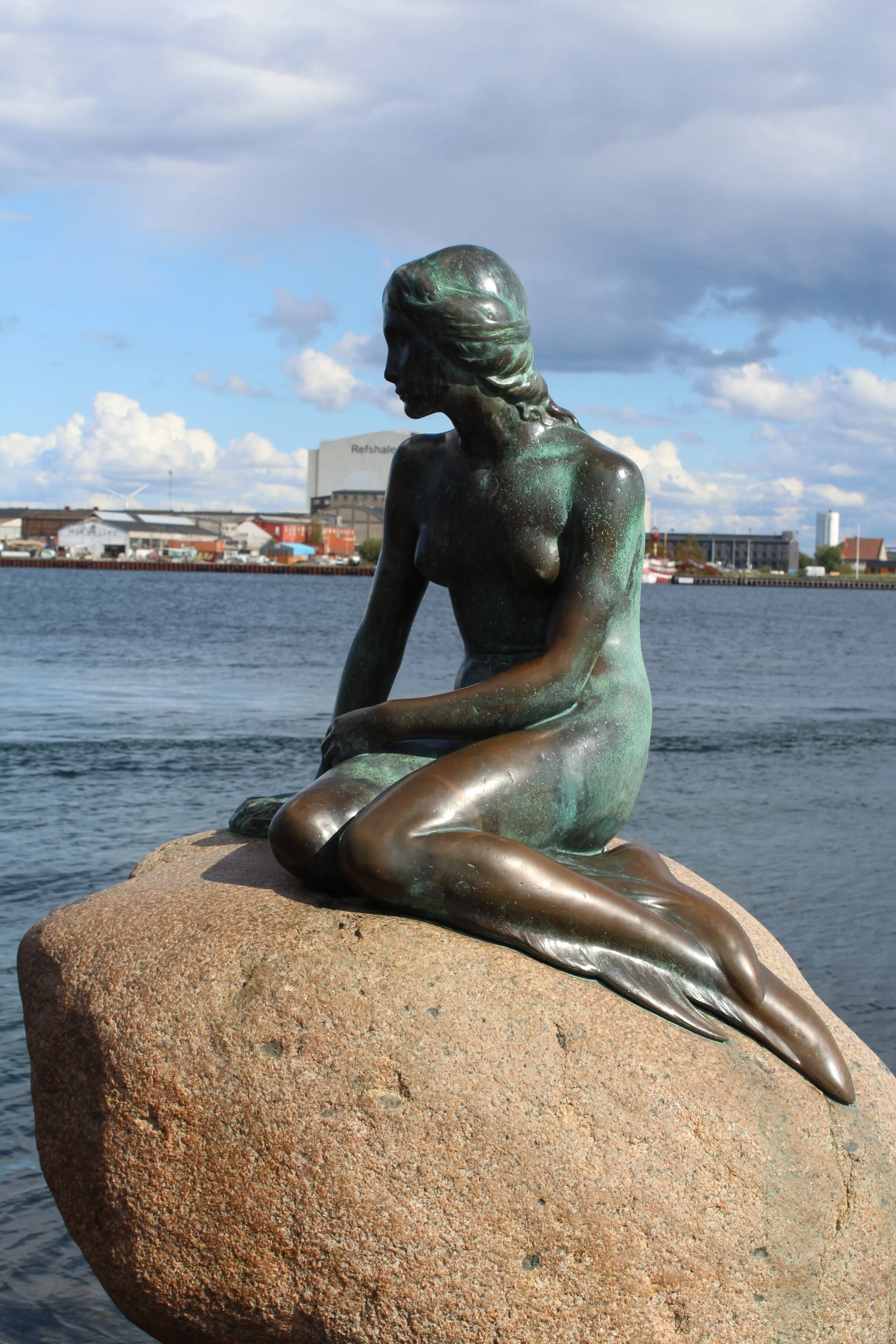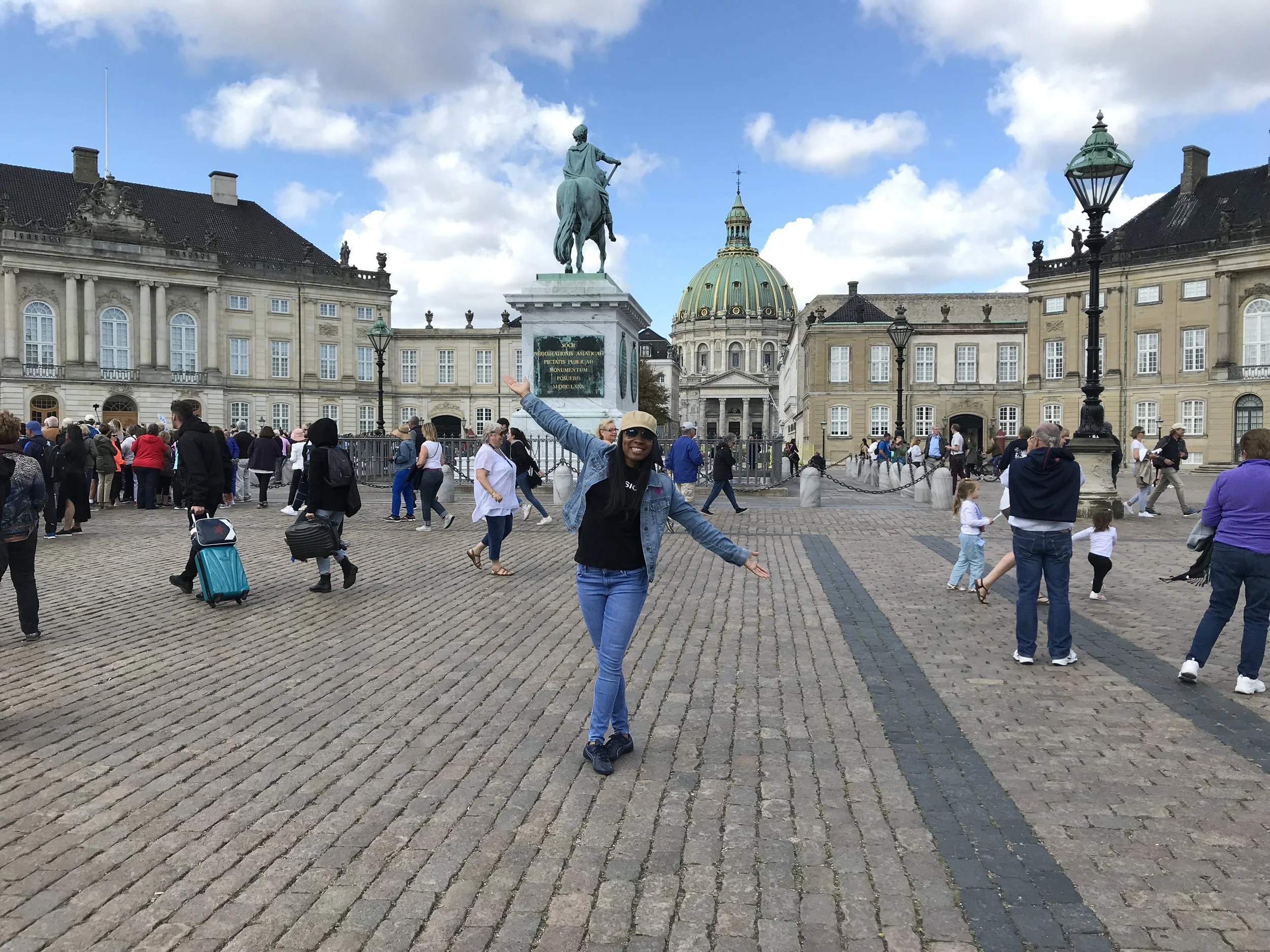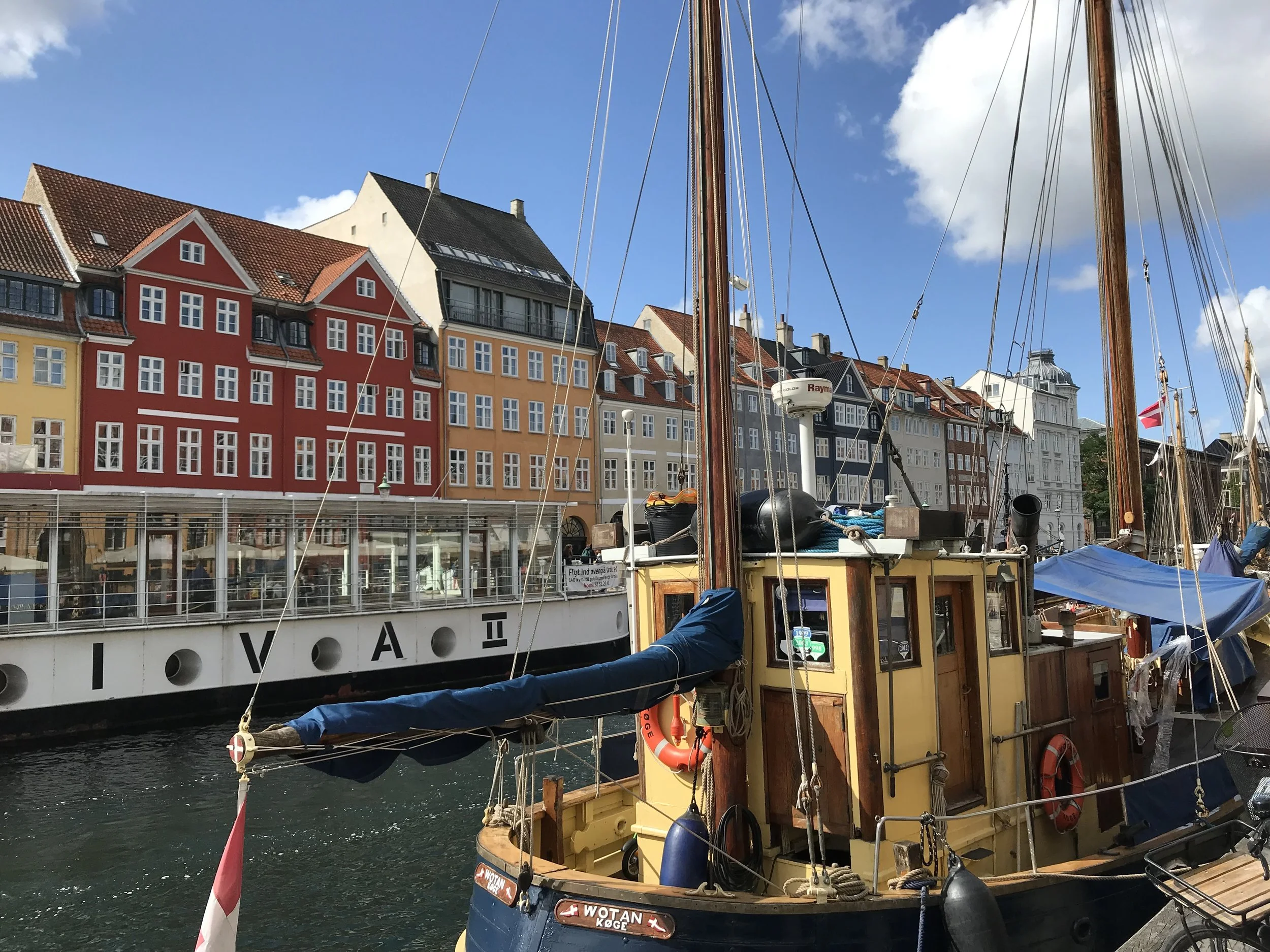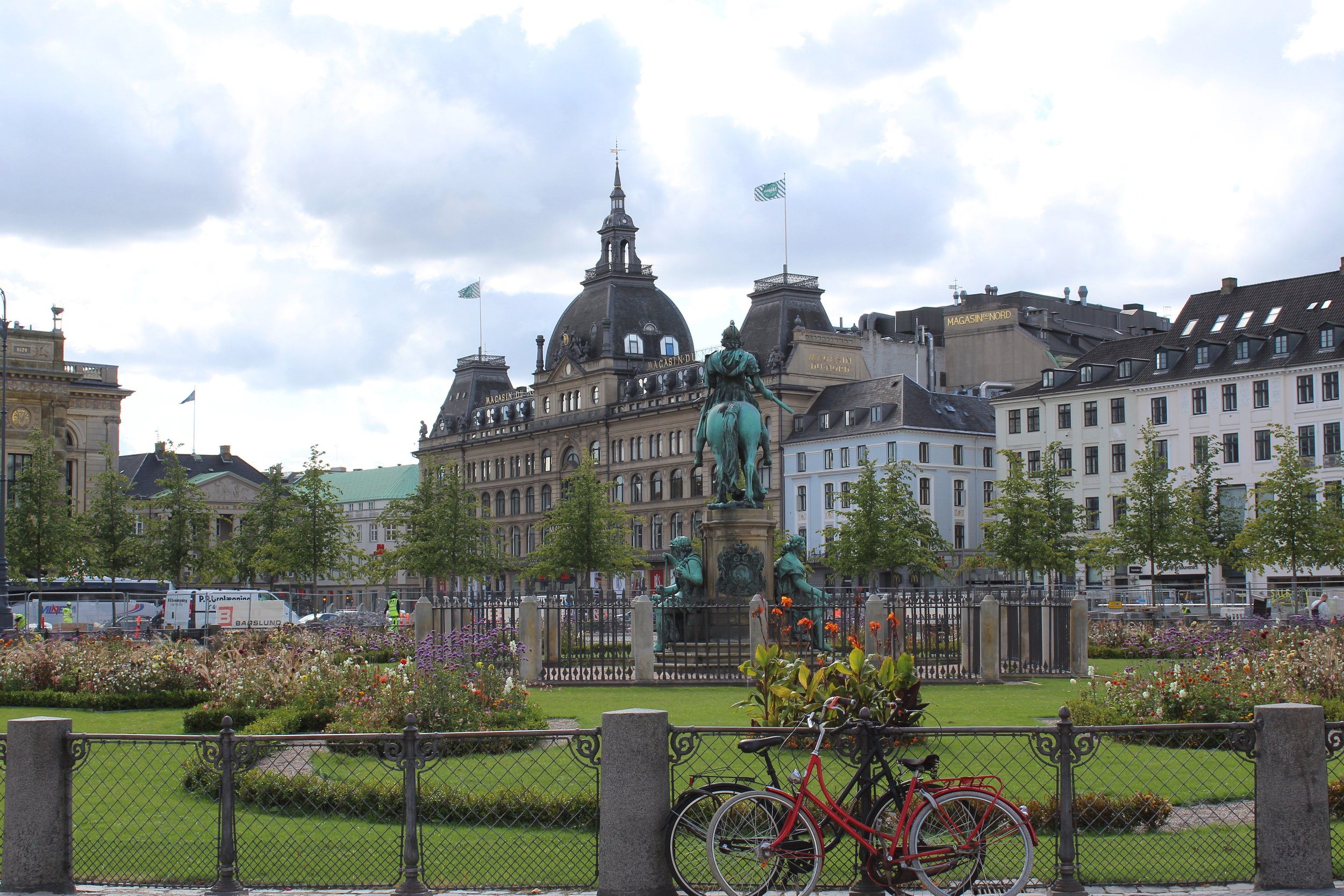Copenhagen Denmark
Denmark opened and closed my Baltic Sea cruise. The first stop was Skagen at the top of the country and the final stop was Copenhagen the capital city. I joined guided tours in both places which made it simple to see the main areas without having to navigate on my own.
Port of Skagen
Skagen
Skagen (pronounced Skay-en) sits at the northern tip of the country where the North Sea and the Baltic Sea meet. My tour combined bus travel and walking which helped cover the coastline, dunes, and the town center. When the ship docked, you could see most of the town from the upper deck. The harbor was filled with fishing boats and larger vessels, and behind them the red roofs lined up in a long row toward the horizon. The port is open and easy to understand with small buildings and clear roads that lead straight into town. Skagen is known for its natural light because the sand and water reflect the sky in a way that softens color which is why artists have been coming here for more than a century.
Råbjerg Mile
One of the first stops was Råbjerg Mile, a large migrating sand dune that moves a little each year. The dune rises about forty metres above sea level, and the sand spreads in every direction which gives the area the feeling of a small desert. From there the tour continued to Det Grå Fyr, the lighthouse on the northern coastline. It stands in a quiet, windy area and also serves as a migratory bird center. The coastline around it is long and open with clear views of the water.
Skagen’s most well known point is Grenen where the two seas meet. The waves come in from different directions which creates a visible dividing line in the water. Visitors walk out along the sand to stand at the tip and watch the currents move from both sides.
The last stop on the tour was the Color Hotel Skagen. This is where we had danishes. I do not usually care for them, but I tried one anyway since we were there. The hotel had a small spread with coffee and tea which made it a comfortable place to sit for a few minutes before heading back to the port.
Other Things to Do in Skagen
Skagen has several places worth seeing if you have extra time. The Skagen Museum highlights the work of the Skagen Painters who were drawn to the soft natural light. Anchers Hus, the preserved home of two of the area’s best known artists, still shows their living space and original artwork. The Skagen Odde Nature Centre explains the wind, sand, and water patterns that shape the northern tip of Denmark. Old Skagen on the western side of town is known for its yellow houses and sunset views. In the center of town, Skagen Church is an easy stop with a clean interior and a tall tower. Hulsig Beach, just south of town, is a wide and quiet stretch of coastline where you can walk without crowds.
Little Mermaid Statue
Copenhagen
When we arrived in Copenhagen, I joined a guided bike tour which worked well because the city is designed for cyclists. We met the tour guide at the dock and headed toward the Little Mermaid statue. The statue sits on a rock at the edge of the water in a small open area where visitors gather for photos. It is smaller than most people expect, but it is one of the city’s most recognized landmarks. The statue has had a turbulent history. Its head was stolen twice, once in 1964 and again in 1998, and each time it was recovered and reattached.
I AM QUEEN MARY Statue
From there we rode along the harbor toward the I Am Queen Mary statue. At the time we were told it was a temporary installation. It looked light in construction, almost like it was shaped from a foam-like material. The temporary version was made from lightweight materials, including polystyrene, while they worked on raising funds for a permanent bronze version. The monument honors Mary Thomas, one of the leaders of the 1878 labor uprising in the former Danish Virgin Islands. Even in its temporary form it stood out because it represented a part of history that is not often mentioned in Copenhagen.
Amalienborg Palace
The bike path continued toward Amalienborg Palace, the residence of the Danish royal family. The palace buildings sit around a wide open square and the guards move in formation throughout the day. The square is open to the public which makes it easy to stand close to the buildings and watch the guards work.
Nyhavn
After leaving the palace area, we rode into Nyhavn. This is the place most people picture when they think of Copenhagen. It is the canal that shows up on almost every travel brochure for the city. The waterfront is lined with bright buildings and old boats, and it stays busy throughout the day. People stop here for photos, food, or just to take in the view which makes it one of the liveliest areas in Copenhagen. From there the tour crossed into Christianshavn, a quieter neighborhood with narrow bridges and calm waterways. The shift in pace is clear as soon as you cross the canal.
At one point the tour stopped at Lagkagehuset, a popular bakery chain in Denmark. The display case was filled with fresh pastries, breads, and rolls. I grabbed a kanelsnegl which is their cinnamon roll-style pastry with a light icing on top. It was soft, sweet, and easy to eat while standing outside with the group and our bikes before we continued the tour.
The final landmark along the route was the Church of Our Saviour. The tall brick structure is known for the spiral staircase that wraps around the outside of the spire. Visitors climb it for wide views of the city. The church sits near the edge of Christianshavn and is easy to reach by bike.
St. Alban’s Church
The route also passed St. Alban’s Church, a Gothic style building surrounded by open green space, and the Gefion Fountain, which shows the goddess Gefion driving a group of powerful oxen. The fountain is large with water cascading down several tiers and has a stronger effect when you see it in person.
Copenhagen works well for short visits. The bike lanes, layout, and mix of waterfront and historic buildings make it easy to see the main highlights without feeling rushed.
Other Things to Do in Copenhagen
Copenhagen has plenty to see if you have more time. Christiansborg Palace has public rooms and a tower with views of the city. Rosenborg Castle holds Denmark’s crown jewels and several preserved rooms from the 1600s, all set within a park. Tivoli Gardens is one of the world’s oldest amusement parks and mixes rides with gardens and restaurants. The Round Tower offers a simple walk up a spiral ramp to a viewpoint above the rooftops. Torvehallerne Market near Nørreport Station has food stalls and fresh produce if you want something quick to eat. Freetown Christiania is known for its artwork and independent structures and is usually explored on foot. The National Museum of Denmark covers the country’s history and cultural artifacts. Superkilen Park in Nørrebro is a modern public space with bright colors and design pieces from around the world.
Practical Travel Info
Getting Around on Your Own
Denmark is easy to explore independently. Most places are walkable, and public transit is simple to understand.
Skagen: The town is small and flat. You can walk from the port into town, rent a bike, or use the local bus to reach Råbjerg Mile and Det Grå Fyr. Taxis exist but can be limited.
Copenhagen: The city is built for cyclists. Bike rentals are common and easy to navigate. The Metro, S train, and buses cover the entire city. Walking works well around Nyhavn, the palace areas, and the canals. Trains connect Copenhagen with the rest of the country.
When to Visit Denmark
Summer has long daylight hours and warm weather which makes it the busiest season. Spring and early fall are cooler with fewer crowds. Winter is cold with short days, but Copenhagen’s indoor attractions and holiday markets keep the city active.
Skagen is most lively in the summer. Copenhagen stays busy year round.
Costs to Expect
Denmark can be pricey, but costs are predictable. Bakeries and quick meals are usually the best value. Sit down restaurants and taxis cost more. Public transportation is reasonably priced. Many outdoor sights are free.
Currency
Denmark uses the Danish krone (DKK). Credit cards are accepted almost everywhere, including small shops and bakeries. Cash is rarely needed, but ATMs are easy to find in both cities.
Best Areas to Stay
In Copenhagen, the city center is the most convenient. Nyhavn, Indre By, and the canal areas put you near major sights and transit. Vesterbro offers shops and restaurants. Christianshavn is quieter but still central. In Skagen, most hotels sit near the coastline or town center and everything is within walking distance.
What to Eat
Bakeries are a major part of daily life. Kanelsnegl is a popular cinnamon pastry. Smørrebrød is a traditional open faced sandwich topped with fish, eggs, or vegetables. Seafood is common in Skagen. Copenhagen has a wide variety of cafes and restaurants if you want something familiar.
Safety Notes
Denmark is easy to navigate safely. Streets are well lit and transit is reliable. The main thing to watch for in Copenhagen is bike traffic since cyclists move quickly. Skagen is calm and quiet with very few concerns.

